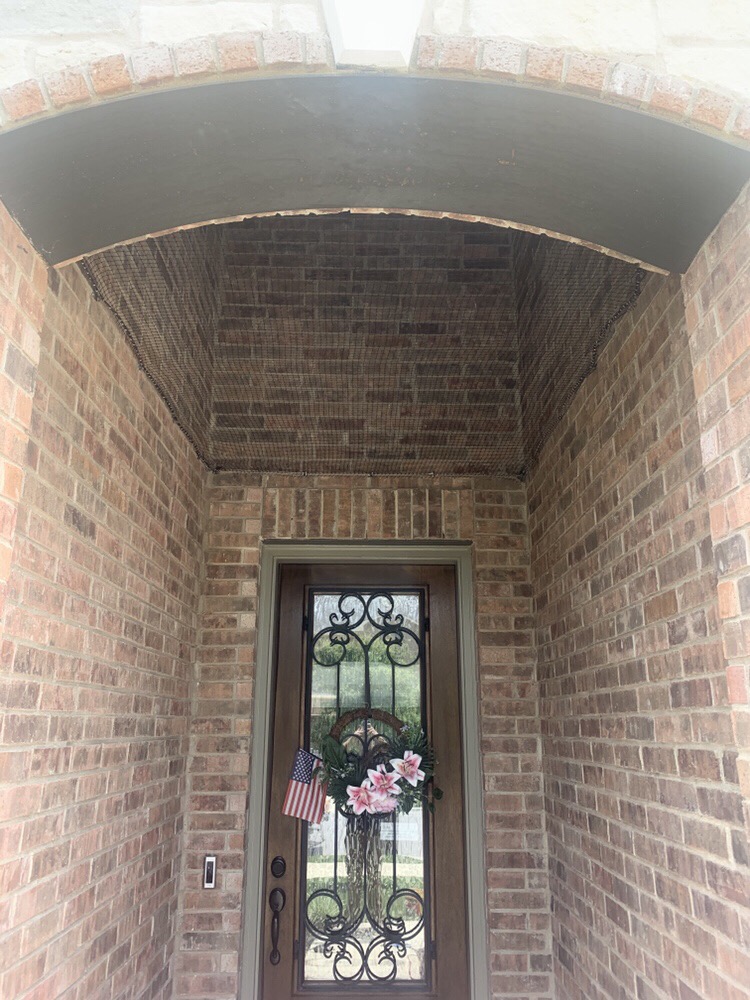Bird deterrents and repellents can work, but it depends on your location, bird species, local laws and regulations, and the damage or nuisances caused by bird activity. Most of the time, bird deterrents and repellents are the only options for keeping birds away from your home.
The only time trapping a bird is proper is when it is stuck in your walls or a small space where it can’t fly out. If this happens, contacting a bird removal expert for help is highly recommended. They have safe and humane equipment to resolve the problem quickly. Technicians at Critter Control also help you by inspecting your property and recommending the correct bird deterrents and repellents to prevent future bird problems.
Types of Bird Deterrents and Repellents
Pest birds spread diseases, damage buildings, and contribute to the loss of stored foods. Birds are prevalent in residential areas and can be a nuisance. Many commercially available bird repellents are available, though these products have been used to varying degrees of success.
Bird Netting
Bird netting is a common deterrent used to exclude birds from their favorite nesting areas, such as the eaves of buildings. Bird netting prevents birds from damaging trees, bushes, and open areas in your home. It is a safe option that takes little maintenance. However, installation is difficult and time-consuming, so most people hire professionals to do the job. But when done correctly, it
There are multiple types of bird netting, including the following:
- Twine
- Rope
- Plastic
- Synthetic fibers
- Metal

Netting sizes are chosen based on which birds you want to keep off your property. For example,
- ¾” will keep out sparrows and any bird larger than a sparrow.
- 1 1/8” netting will keep starlings, pigeons, and larger birds out.
- 2” netting will keep away seagulls, hawks, and larger birds.
Nets come in different colors to match the area where they will be placed. If you have a wide range of birds, the smallest netting size is best.
Bird Spikes and Wires

Metal spikes and wires work similarly, as they are placed on ledges to make it difficult for birds to land. They do not harm birds because they are not sharp and have dull points. They make landing and roosting in particular places impossible.
Bird deterrent spikes are easy to install and come in various sizes for windows, ledges, eaves, and gutters. They can also be bought in multiple materials, like plastic or metal.
Wire systems are parallel strands of wire strung between metal pegs that work as barriers. They are primarily used on windows and building ledges. While they successfully make it difficult for birds to roost in such places, this method targets pigeons almost exclusively and will not guard against other pest species.
Bird spikes and bird wires work best at deterring pigeons, seagulls, and crows. Smaller species like sparrows and starlings ignore metal spikes and wires and can roost in between them.
Sonic and Ultrasonic Devices
Sonic bird-repellent devices release sounds that humans can hear. Ultrasonic devices emit sound frequencies beyond what humans can hear, but birds can still hear them. Both devices can send sounds that mimic bird predators, like eagles or owls, scaring away many bird species. You may also choose devices that emit clapping, shouting, screeching, screaming, or gunshots.
In addition, both devices are eco-friendly and effectively reduce the number of birds and bird droppings on your property.
Advantages of Sonic Bird Repellent
- Provide faster results
- Sounds cover wide areas
- Easy to install and use
- Provide results for an extended period
- Safe and humane
Disadvantages of Sonic Bird Repellent
- The sounds from the device can become annoying to humans
- The device may not scare away all bird species
- Birds may get used to the sounds after a while
Advantages of Ultrasonic Bird Repellent
- Humans cannot hear the noises, so they aren’t annoying
- Devices offer multiple frequencies to prevent birds from getting used to the sounds
- Devices require little maintenance
- Noises may also repel bats, rodents, and other critters
Disadvantages of Ultrasonic Bird Repellent
- Not every bird species will be deterred or repelled
- A device may annoy your pets
- It may take birds longer to respond to sounds
The effectiveness of sonic and ultrasonic devices will vary. A bird removal expert can tell you which noise bird deterrents work best in your home.
Visual Deterrents
Visual deterrents refer to decoys of bird predators that scare birds away from your home. Examples of predator decoys for birds include:
- Owls
- Eagles
- Hawk
- Coyote
- Snakes
Other visual deterrents to scare birds include reflective tape, holographic devices, eye balloons with bright colors, and lasers.
While visual deterrents are effective on some birds, like those that scare easily, others can quickly get used to them. Some birds will not leave until they are sure it is a predator. You would often have to move the deterrents around your property to make it seem more real. Like other deterrents and repellents, they can lose effectiveness over time.
Call a Professional Bird Control Specialist
Since most bird repellents only work as short-term solutions, it is recommended that you call a professional pest control service. They can guide you on installing the best bird deterrent for the species of birds causing problems around your home. They consider the time of year, environment, and types of damage before preparing a solution.
